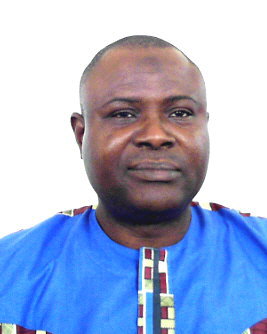Course Synopsis
A geographic information system is a computer-based system that allows the study of natural and man-made phenomena with an explicit bearing in space. To this end, the GIS allows data entry, data manipulation, and production of interpretable output that may teach us lessons about the phenomena. The focus is to impart useful skills on the students in order to prepare them for specialized fields such as Geosciences, Forestry, Ecology, Meteorology, Marine Science, etc. Topics to be covered include illustration and overview of GIS applications. Spatial data infrastructures; metadata, search/access, data warehousing, data mining, Standards, Specific programmes of countries, especially Nigeria’s Geospatial Data Infrastructure (NGDI), United Nations Environment Programmes (UNEP); Global Resources Information Database (GRID); Digital Earth; Geospatial Data Infrastructure (GSDI); Global Mapping; common standards: OpenGIS, ISOTC211. Presentation of spatially variable data using common softwares.
Course Synopsis
The course is designed to teach students the principles and techniques of geological mapping using remotely sensed images. It is a compulsory course for students in Remote Sensing, but it also meets the needs of students in Applied Geology and other earth sciences related disciplines. It is also expected to expose to hands-on training in the use of hyperspectral images in structural mapping.
Course Synopsis
The course introduces the concepts of urban and region in the context of planning. Recall the principles of remote sensing to facilitate interpretation of the various remotely sensed data. Delineation and quantification of urban spatial structure and determine the rate of urban expansion from multi-temporal mages. The course affords the student opportunity of undergoing cadastral mapping and extracting cadastral information from the satellite imageries for complementing field data. The students will be taught how to integrate these data to cadastral database to allow cadastral information retrieval and update. The course further exposes the students to what constitutes slum and squatter settlements. This will be followed by mapping of residential area from the high resolution images and simultaneously carryout interpretation, detection and analysis of evidence of slum and squatter settlements not only in the centre but also in the fringe areas. The course familiarizes the students with different remote sensing techniques of estimating population in a particular urban area.The student will comprehend this better by undertaking land use/land cover classification to be able to know and analyze urban land use change and its impact on the ecological fragile ecosystems. The course will be round off with traffic and parking survey on the high resolution image.
Course Synopsis
Geomorphology is the science of the study of landforms with reference to their shape, size, origin/processes of development (genetic evolution), nature and material composition as regards: static aspects of study of relief forms. It also deals with the study of dynamic processes presently acting to form as well as sculpture the landforms/landscape, such as floods (flood plain features), erosion and mass movements causing for e.g. coastal erosion, landslides etc. Topics to be covered include Overview of geomorphology; Landform analysis based on aerial satellite data interpretation, drainage basin morphometry and slope analysis; remote sensing for geomorphological mapping, landform and terrain evaluation, morphostructure, morphotectonics and neotectonics; land system analysis. Comparative study of aerial photographs and satellite images interpretations in terrain feature analysis. Scale effects in maps.
Course Synopsis
The course introduces the basics of stereo Photogrammetry, principles of satellite Photogrammetry as well as that of radargrammetry and synthetic aperture radar to the students. The principles of the plotting instruments particularly stereoplotters will be taught. The course intimates the students with procedures of aerial triangulation, control and mapping. It will further exposes the students to the principles of digital Photogrammetry. It will look into scale and resolution presentation. The course provides basic understanding of general application of stereovision, stereoscopes and stereocoverage. The course equips the students with the principles of cartography to facilitate good quality map production

